By Oleksii Vasyliuk and Valeriia Kolodezhna
After World War I fighting ended a century ago, the government of France set aside 1,200 sq km of devastated but fertile land for wildlife restoration. The government of Ukraine should adopt this practice when it becomes possible after the war as well. Environmental conservation and safety principles in Ukraine should meet the same high standards used in developed Western European and other nations. This article will describe the localized consequences of munitions craters on soil ecosystems and subsequent impacts on ecosystems and humans and review global approaches to post-war approaches to managing these landscapes.
Looking at Figure 1 satellite imagery in Izyum District in Kharkiv Oblast before and after hostilities, it does not take an expert to conclude that using these and similarly damaged lands after the war will be difficult and dangerous.

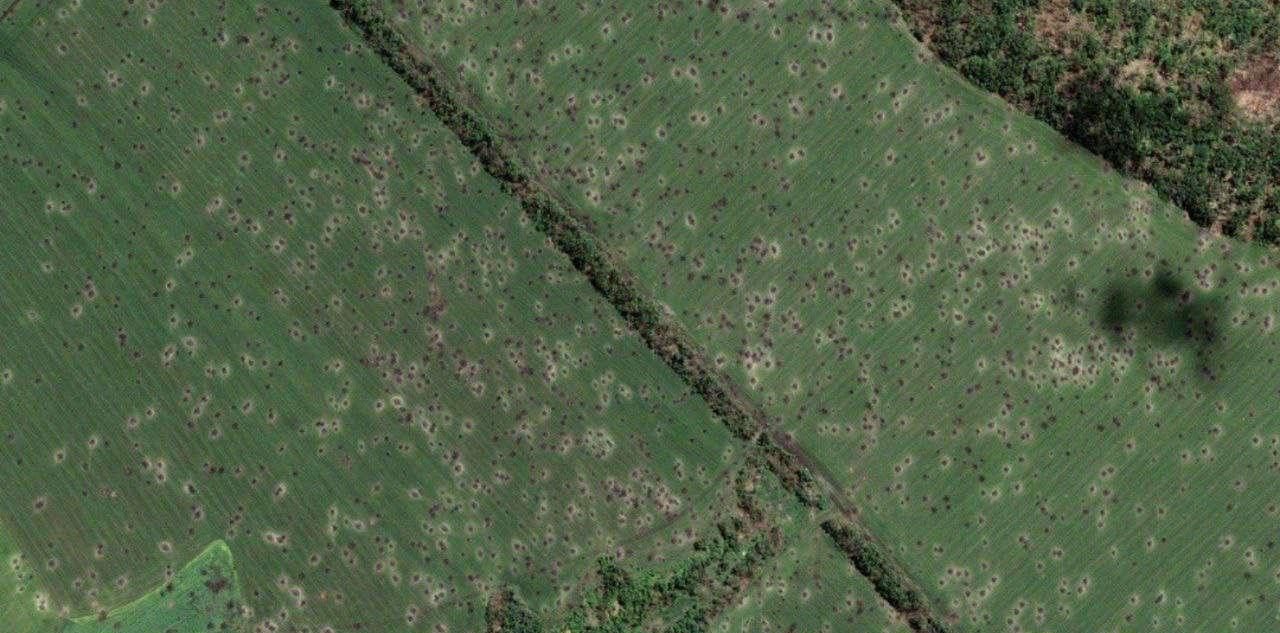
We can make troubling conclusions using a methodology devised by the NGO Environment-People-Law (EPL) to estimate the consequences of munitions bombardment in eastern Ukraine. The image above shows roughly one sq km of fields containing winter crops. We counted 480 craters made by 82 mm shells, 547 craters made by 120 mm shells, and 1,025 craters made by 152 mm shells. This single square km of land is now contaminated with roughly 500 metric tons of iron, 1 ton of sulfur compounds, and 2.35 tons of copper. It is difficult to calculate the volume of heavy metals and other compounds; that number is smaller in volume. Additionally, the explosions displaced at least 90,000 tons of soil.
It is too soon to estimate the number of craters across the entire combat zone in Ukraine. After the Vietnam war it was estimated that there were 2.5 million craters. Today’s war is ongoing, and hundreds of new such wounds appear on Ukraine’s landscape every day. Thus, the task facing us now is not so much a calculation as it is an attempt to answer this question: What is our vision for damaged landscapes?
Harm to fields, harm to nature
Among the types of ecosystems subject to the negative impact of today’s military operations, soil ecosystems arguably suffer the most. Recognition of soil as a natural ecosystem facilitates the understanding of damage to arable land as a conservation issue.
The large numbers of small organisms that create and sustain soil and its biological cover – vegetation, mosses, lichens, and fungi – are the most vulnerable due to their lack of mobility. In other words, all living organisms in the soil layer or those that protect the surface from erosion are incapable of leaving the area where munitions explode, nor can they protect themselves from their negative impacts. Study of this issue must combine the initial short-term destructive action of the blast wave followed by the long-term effects of chemical pollution.
Exploded munitions as chemical pollution
A partial chemical reaction occurs as the result of a munitions explosion of any caliber and results in pollution of soil and atmosphere. In addition to relatively harmless CO2 and water vapor, the oxidation of every kilogram of explosives produces several tens of cubic meters of toxic gases that enter the air column: SO2, NOX, CO (including aromatic hydrocarbons that are significantly more toxic). Ultimately, sulfur and nitrogen oxides return to the soil through acid rain, precipitation which changes soil pH and damages plants1. In the end, soil becomes the final link in the chemical damage caused by exploded munitions.
Some metal fragments and foreign substances remain in the soil, while others disperse in the air and then precipitate back onto the land (fragments can travel up to 300 m, unused reagents up to 35 m). Unfortunately, these fragments also carry a considerable threat. Munitions are generally manufactured using iron alloys that, in addition to iron and carbon, also include sulfur and copper. 120 mm and 152 mm munitions produce, respectively, 1,600-2,350 and 2,700-3,000 individual fragments, each with a mass of 1g or larger.2
We can use satellite imagery to calculate emissions volumes from high-explosive munitions that detonate on the ground or slightly below ground. It is much more challenging to calculate the number and scale of unexploded munitions which occur in 3-30% of deployments and depend on a number of conditions. The impacts of unexploded ordnance requires further study as it relates to Ukraine today. These calculations can only highlight the scale of the problem.
Soil erosion
The blast wave itself can inflict significant destruction. For example, a 250 kg bomb can create a crater up to 8 m in diameter and 4 m deep upon detonation. Some portion of the soil is always removed due to explosion. Given that, on average, one kilogram of explosives produces 1.5 cubic meters of displaced soil, a 250 kg bomb displaces 375 cubic meters of soil. The remaining soil in the crater will be compressed given that the main action of the blast wave occurs there.
Compacted soil is structurally degraded and changed, on top of changes stemming from agricultural processes that dominated the pre-war soil landscape (humification, leaching, weather, and, of course, the moisture cycle). These war-related soil change processes necessarily result in changes to soil composition, an issue still being encountered today in Central Europe (including Ukraine) after the first World War. Natural soil restoration is a remarkably time-consuming process with a global average rate of 0.06 mm of soil per year.
As for natural vegetation, virtually nothing will remain at the explosion site. Sometimes, the blast can also destroy the waterproof layer of bedrock beneath. In those cases, water infiltration accelerates into subsurface layers without lingering, actively eroding the walls of the crater in its path. This in turn hastens deposition of organic material in the soil profile by increasing the number of micro- and macrofauna, but also results in acidification rather than enrichment of the soil. Rapidly dispersing pollutants enter water-bearing layers and waterways in the same fashion, sometimes traveling far beyond the battlefield and influencing the biota and ecosystem services that depend on water and from which humans benefit. For example, drinking water use was banned in 2012 in 544 municipalities near France’s “Red Zone” (see below) due to excessive concentrations of the percolate used in rocket and munitions production.
The schematic in Figure 2 maps the impacts of munitions explosions on the environment. Looking at the progression, it is clear that soil erosion results in the loss of fertile topsoil and the release of its accumulated organic matter into the atmosphere – also a primary factor in global climate change and desertification.
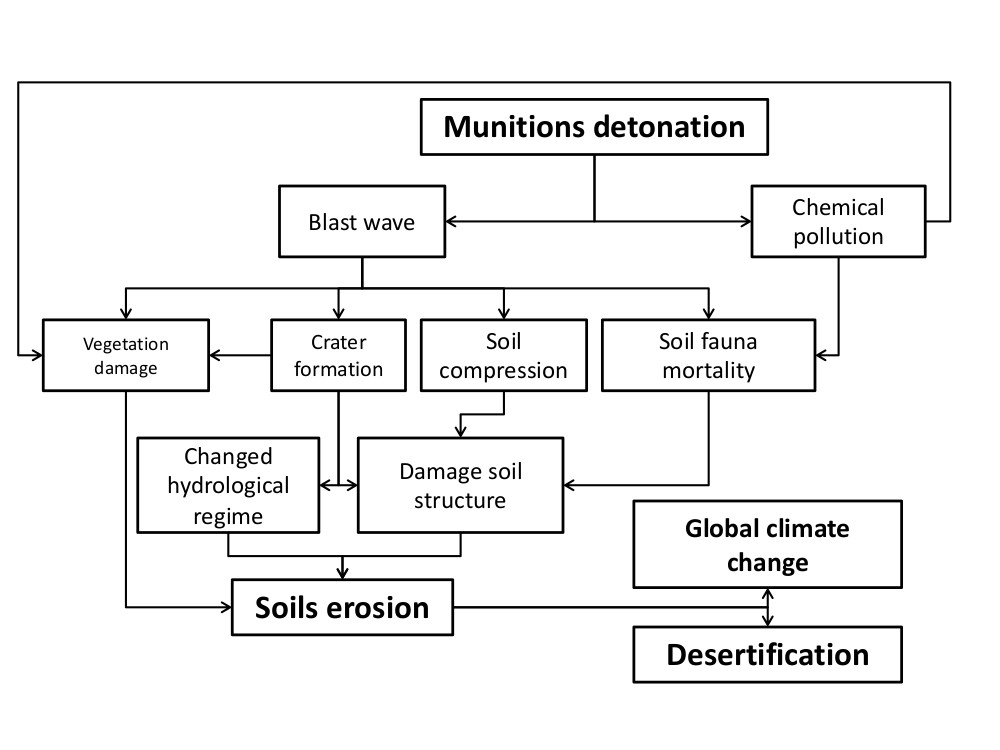
Stewardship of Ukraine’s rich soils was problematic prior to the war, with almost 26% (16 million hectares) of soil cover considered “eroded,” with another 15% in need of removal from cultivation for restoration. Damage on this scale is the result of unsustainable agricultural practices, including the siting of many plowed areas on slopes. In wartime, erosive processes have an even greater cumulative impact.
It is also noteworthy that soil erosion in wartime takes place not only during munitions explosions, but also in the form of direct damage to the soil layer caused by heavy equipment, dug fortifications, and trenches of various types. Considering that the majority of military actions in 2022 are taking place in Ukraine’s fertile soil zone, the impacts of pollution and erosion on agriculture will be significant, likely even more significant than wildlife impacts.
Managing war-damaged lands
The simplest approach that is safe for humans and ecosystems is to simply abandon munitions-polluted lands. That was the course taken in northeastern France’s Red Zone. The French government declared over 1,200 sq km of arable land in the area where the Battle of Verdun took place “completely devastated” and enacted a strict entry ban and included additional zoning (Figure 3) to reflect other degrees of impact.
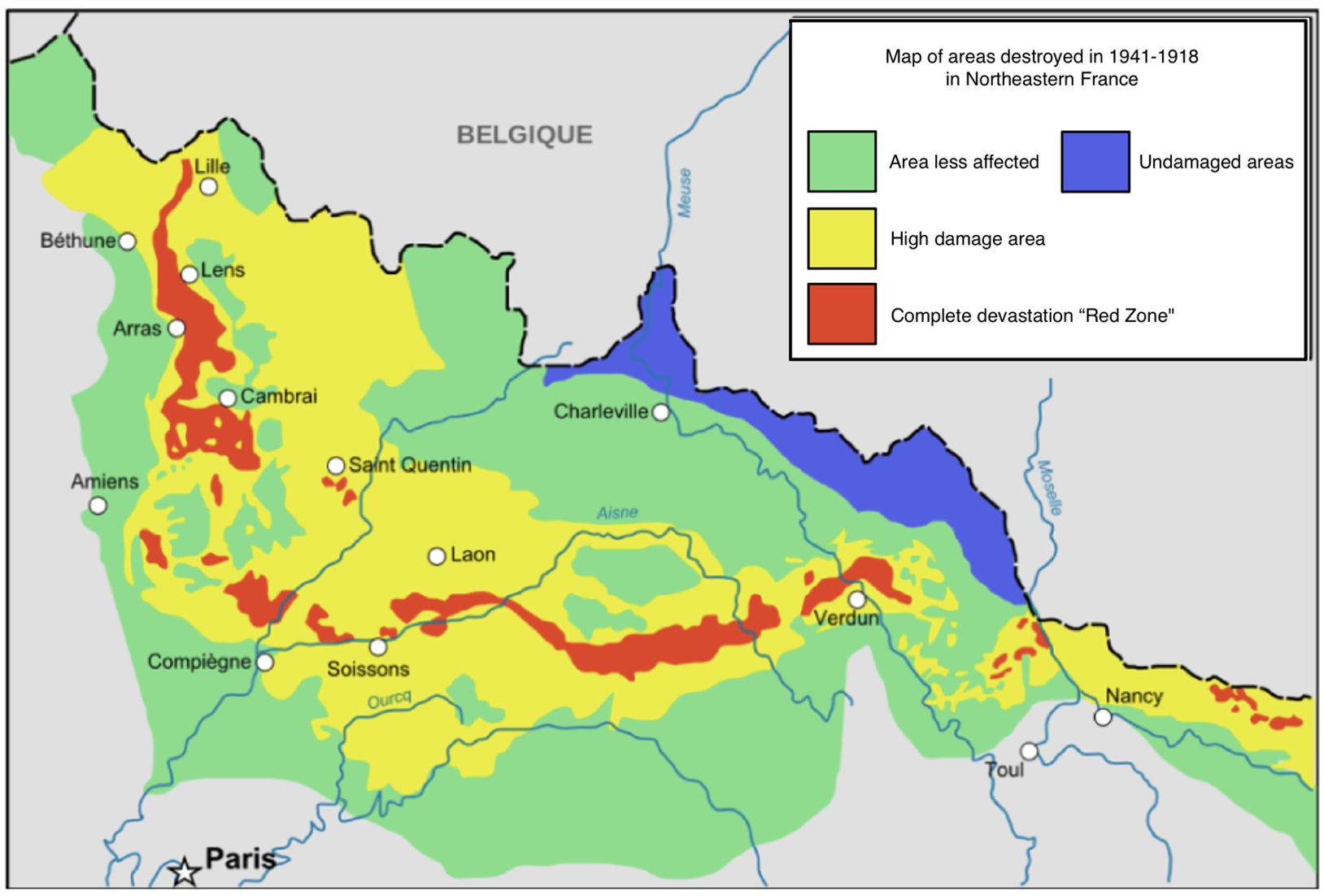
Subsequent cleanup work in the most impacted areas reduced the Red Zone to 100 sq km (roughly the size of Paris), however, it is still forbidden to enter or use the land for agriculture. This was naturally a huge loss for local farmers and local residents. After all, before the area near Verdun became a battlefield, it was a developed agricultural region dotted with small villages. As a result, the temptation to resume agriculture and thereby support the country’s economy, was very strong. Farmers in the Yellow and Blue Zones still risk their health to this day, inadvertently encountering unexploded munitions, remnants of a century-old war. Although mine removal work is ongoing, local authorities estimate that it will take 300-700 years to completely clear the area at the current pace. The scale of pollution and soil damage in certain areas of eastern and southern Ukraine that occurred in spring 2022 during the Russian-Ukrainian war are no smaller than the scale of WWII events near Verdun.
Regardless of economic status, millions of hectares of mined land remain off limits around the world in North Africa, Asia, South America, and Europe.3 In Libya, for example, fully one-third of the country’s land still contains unexploded munitions and mines dating back to World War II.4
Usually, nations that are home to landscapes seriously damaged by shelling offer alternatives to “munitions farming” and remove such lands from cultivation. For example, France made this choice in 1918, as did Balkan countries after the war in 1999; respectively withdrawing 120,000 ha and 2.5 million ha of land from agricultural use. Chemical and radioactive contamination of soil and water are addressed in different ways in different places. In some places, “red zone” vegetation and soils have not recovered after more than a century of waiting.

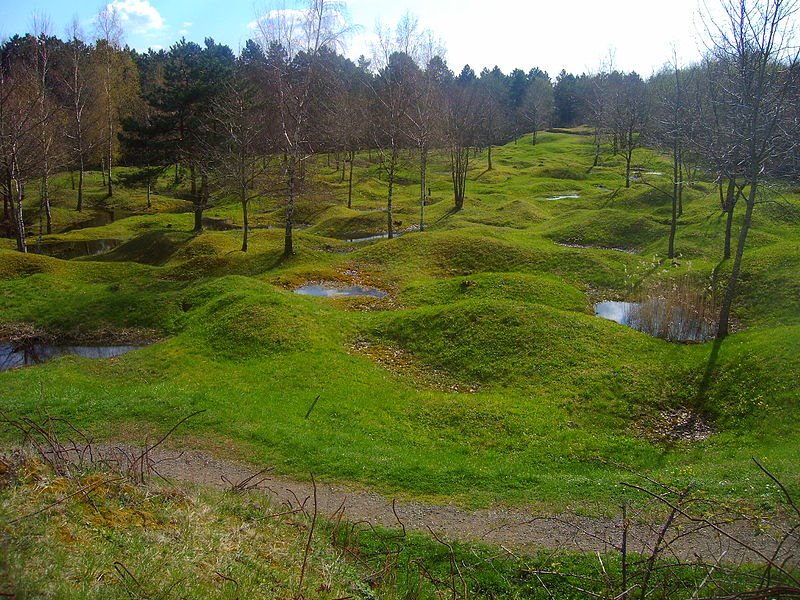
That said, some plants have succeeded in recapturing spaces once under human cultivation, and the munitions craters became part of the landscape, filling with water and forming new habitats in places where humans have not set foot for many years (see Figures 4 & 5).
Rehabilitating land broken by sinkholes is expensive and resource-intensive, and such decisions must be based on an analysis of the density and severity of damage. The “let nature recover naturally” scenario is low-cost.
In 1986, the government in Vietnam decided to protect forests damaged by chemical attacks during the Vietnam war (when the United States sprayed dioxin from airplanes) and established the Nui Cam Nature Reserve. A team of scholars has been focused on restoring Vietnam’s forests to the territorial extent of their growth before the 1940s, while maintaining a commercial reserve. They achieved this goal in 2010.
Allowing munitions-damaged soil ecosystems to recover naturally is the most prudent for areas of Ukraine where the landscape will have suffered the greatest damage during this war. The alternatives are extremely resource-intensive and success is questionable. We will briefly examine a few of them.
Recultivate
Tracking pollution levels over such enormous areas is unlikely to be feasible for many years in the future and comes at a significantly greater cost than mine removal. It’s inevitable that some of the lands will be extensively contaminated, but it will be difficult to pinpoint them using laboratory studies. On the other hand, using such lands for agricultural purposes before careful research puts consumers at risk when products containing chemically polluted grains and vegetable oil are exported or used domestically.
Biofuel
Biofuel agricultural production on contaminated land is similarly problematic. Pollutant migration from soil to biofuel crops is poorly understood, and it is impossible to guarantee compliance with biofuel quality standards and safe production for the same reasons as described above in the risks for recultivation.
Construction
There is also the option to develop damaged landscapes: building housing, infrastructure, and industrial sites. In those cases, the land will require careful de-mining work over large areas and, again, it will be impossible to guarantee safety in such locations, perhaps for centuries. Moreover, urban planning requirements in the windy and arid steppe zone necessitates siting settlements in river valleys, where they will be protected from the wind and naturally more humid. Most of the battle-damaged areas are on arable land situated on windy, undefended plains. The gradual transport of pollutants through ground water will also result is progressive worsening of water quality in all natural water sources in the zone surrounding the battlefield.
Creation of no-go “red zones” will simultaneously fulfill current Ukrainian legislative requirements regarding land conservation and desertification prevention. In addition, the “EU 2030 Biodiversity Strategy” provides for the removal of 30% of all EU agricultural land from cultivation. This strategy is a strong opportunity to protect and restore Ukrainian lands. Incidentally and compared to other European nations, Ukraine has significant long-term experience in removing contaminated land from cultivation: the Chernobyl Exclusion Zone, an area which, prior to the 1986 explosion, consisted of fields managed by collective farms. Today, the zone has become not only the largest green area in the heart of Europe, but is also Ukraine’s newest but largest biosphere reserve.
1 Military actions in eastern Ukraine are a civilizational challenge for humanity [Воєнні дії на сході України — цивілізаційні виклики людству]. L’viv: Environment. People. Law. , 2015. — 136 p. Continue reading
2 а) Derevyanchuk A. and M. Shelest. Artillery weapons and ammunition [Дерев`янчук А. Й., Артилерійське озброєння і боєприпаси]. Sumy: Sumy State University, 2010. – 415 p. Continue reading
b) A. Westing et al. Explosive Remnants of War. Mitigating Environmental Effects. 1985. P. 121
3 Westing AH, editor. Explosive remnants of war: mitigating the environmental effects. London (UK): Taylor & Francis; 1985. Continue reading
4 Sgaier K. Explosive remnants of World War II in Libya: impact on agricultural development. In: Westing AH, editors. Explosive remnants of war: mitigating the environmental effects. London (UK): Taylor & Francis; 1985. p. 33-7. Continue reading



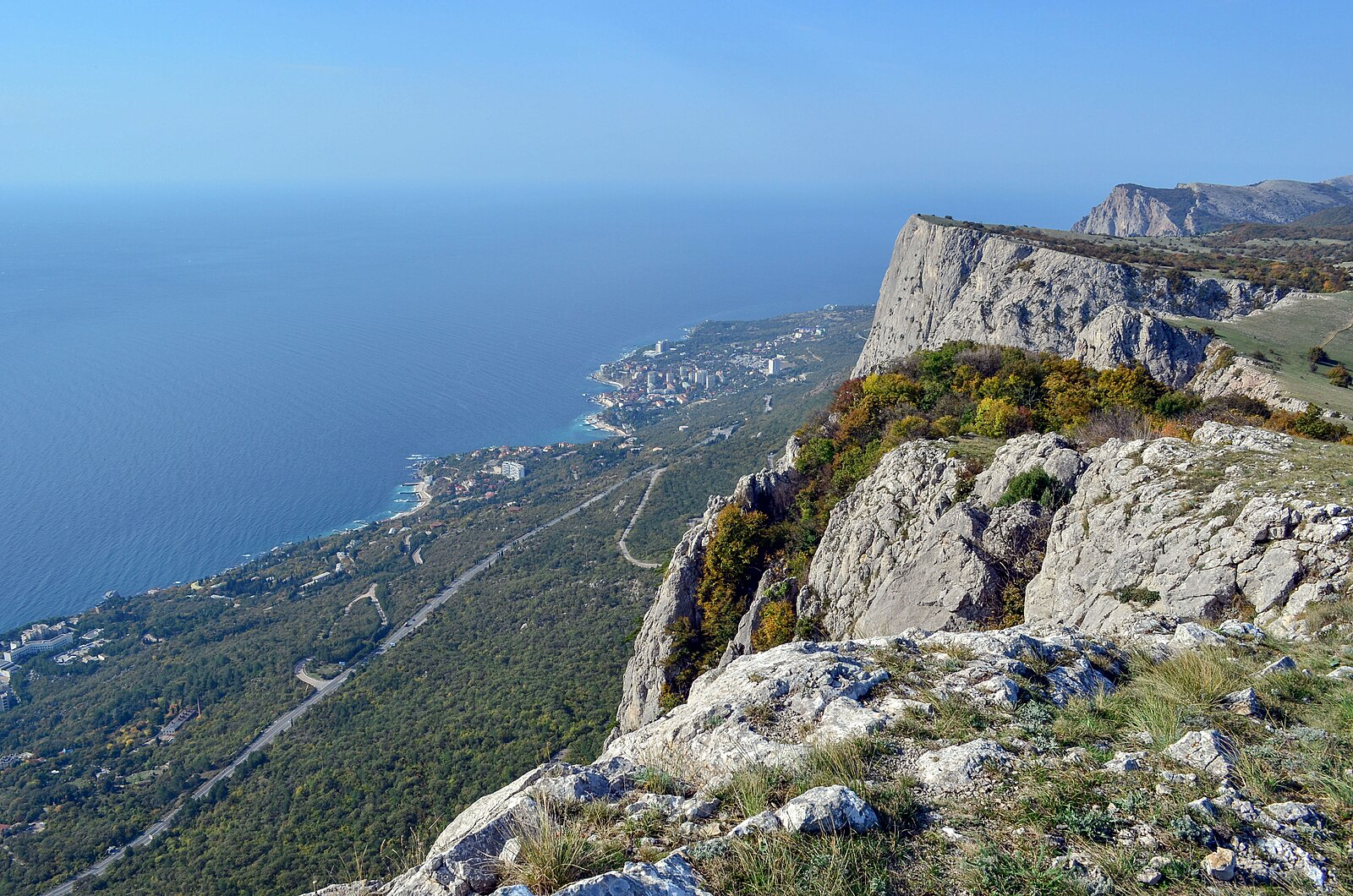
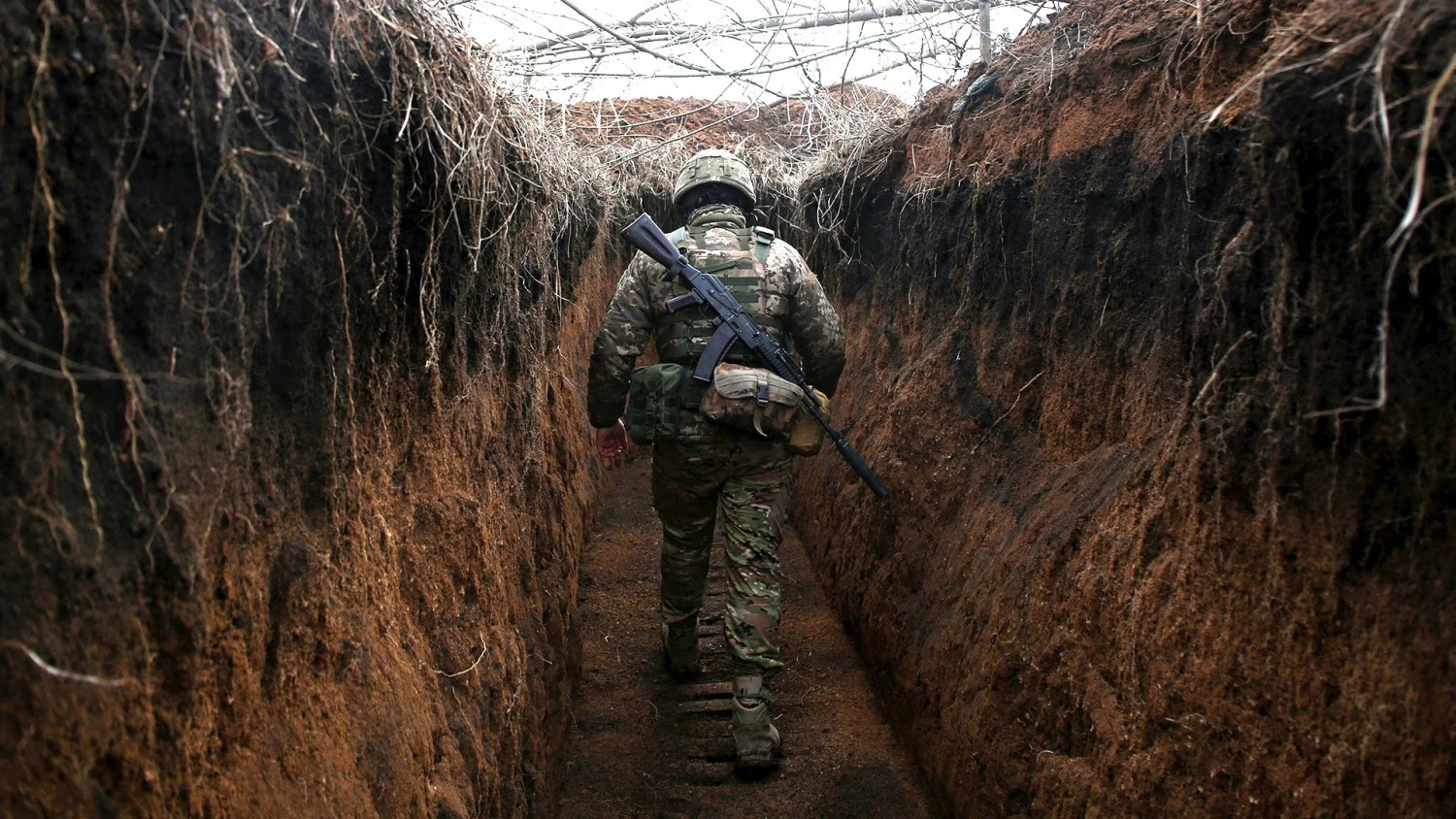
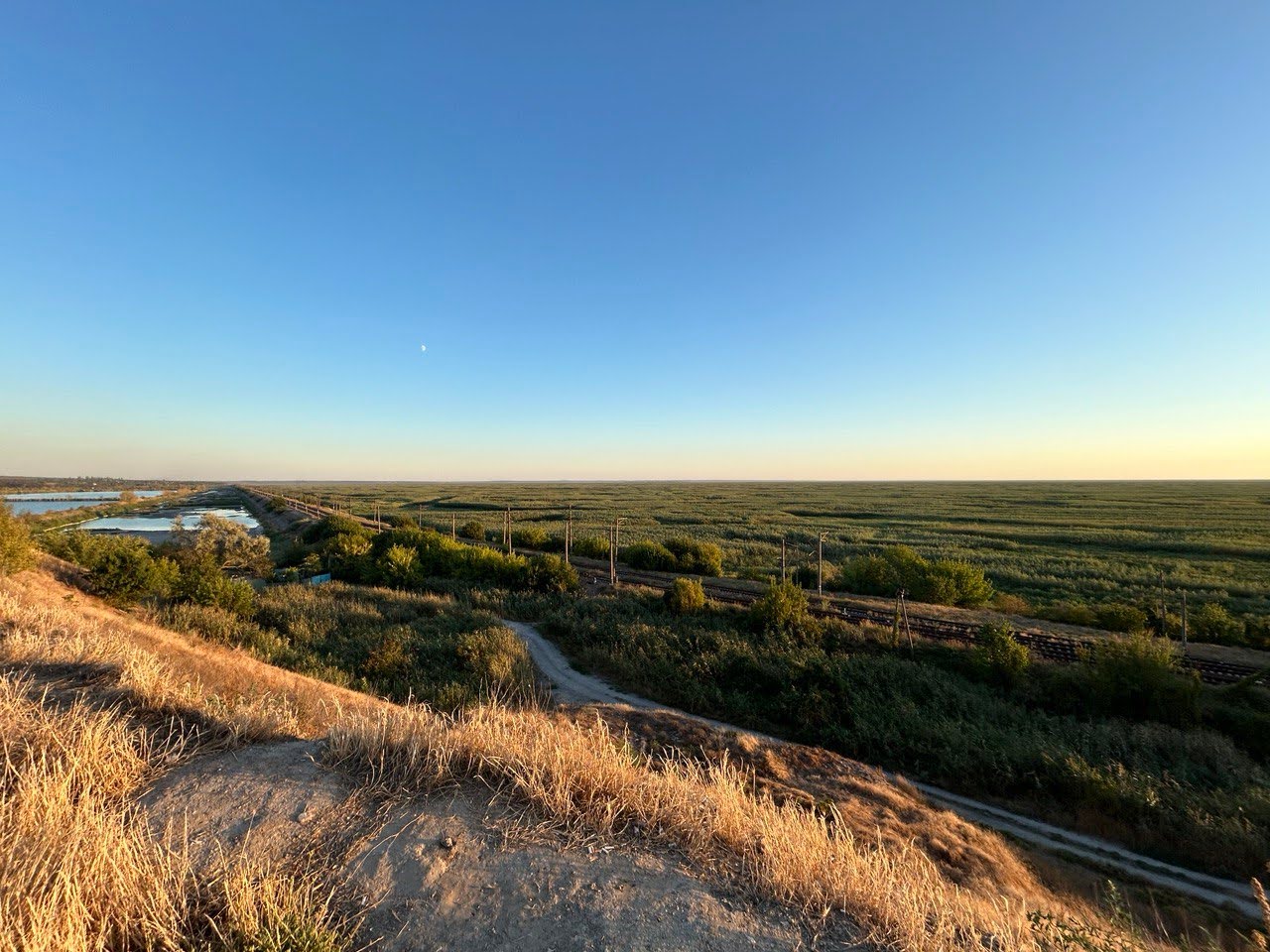

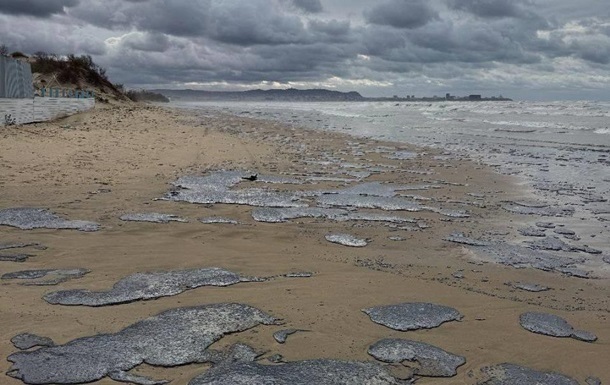
Екологічні і соціальні проблеми затоплених й підтоплених територій долини Ірпеня, а особливо селища Демидів, на жаль ще не завершились. В умовах відключення електроенергії й продовження бомбардувань ворогом взимку й навесні у жителів цього регіону можуть бути ще непрості випробування.